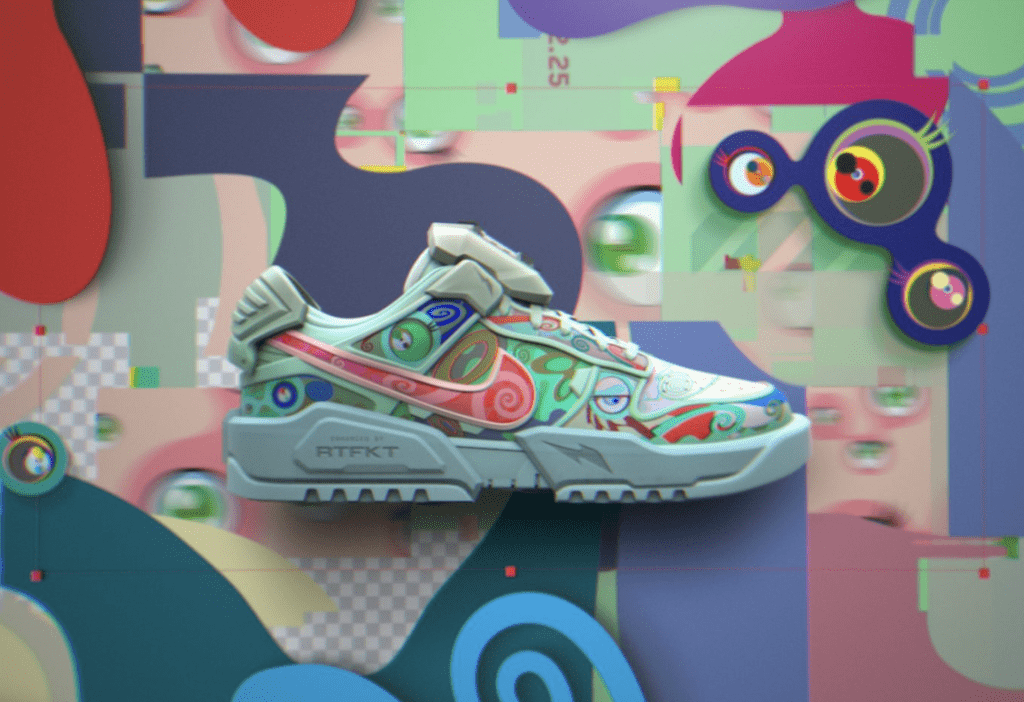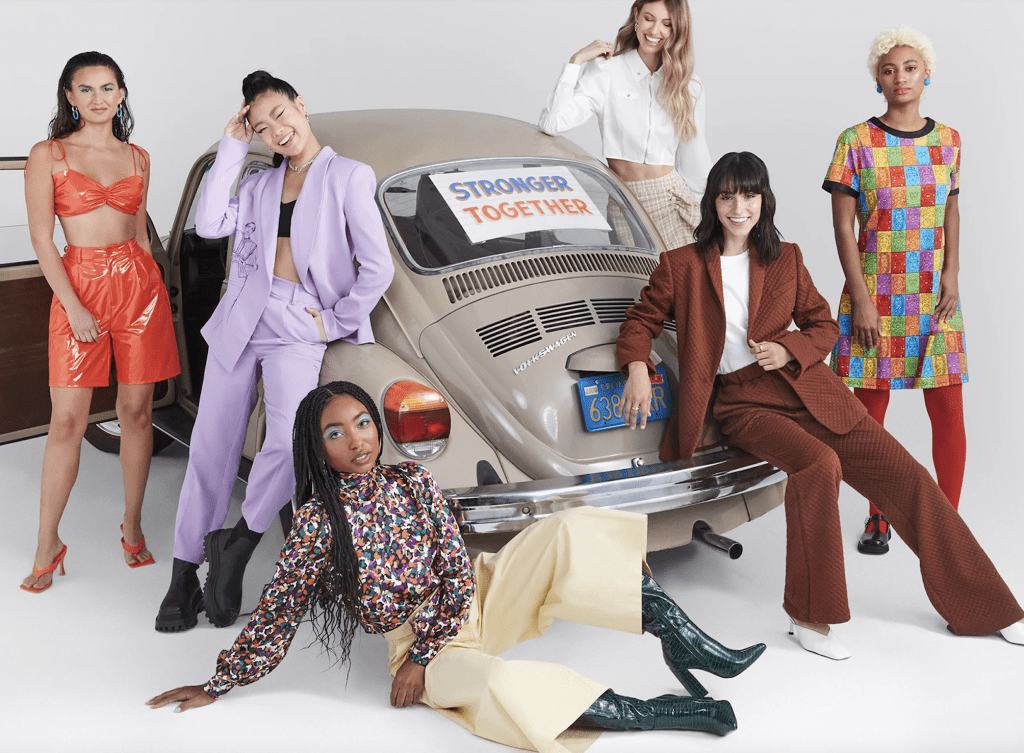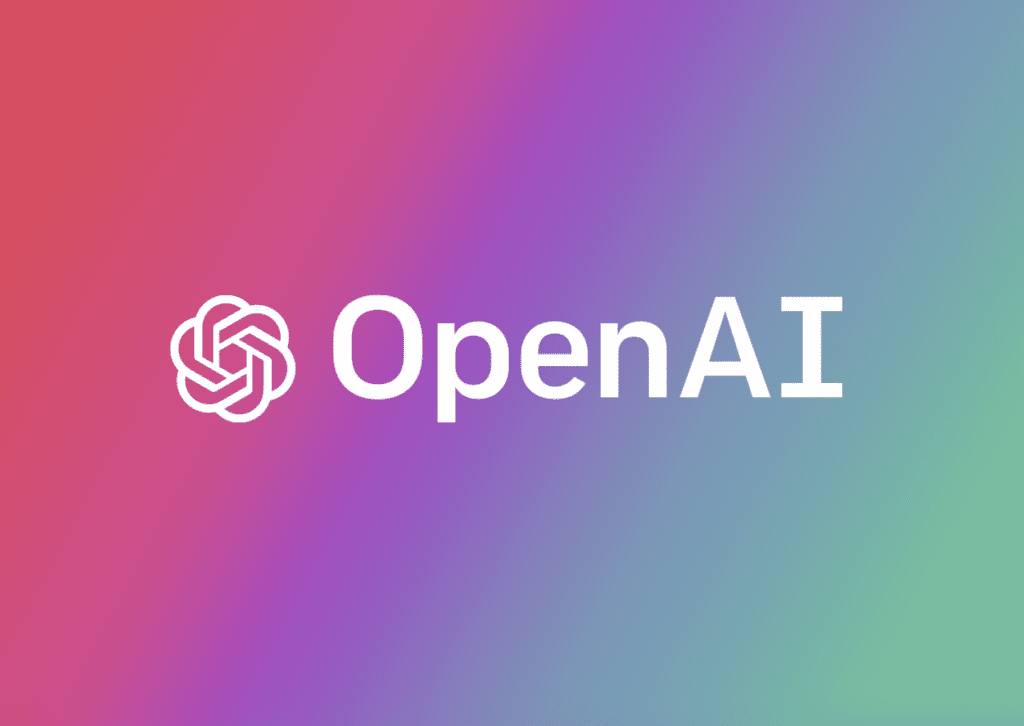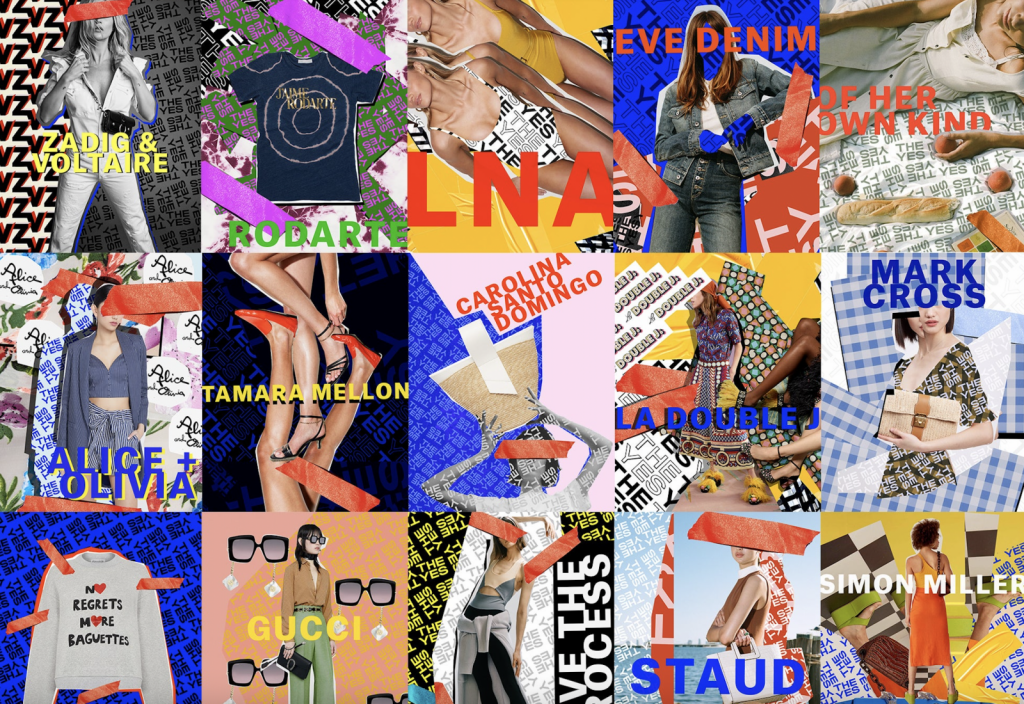Nike, Dolce & Gabbana, and Tiffany & Co. landed in top spots on a list of large brands that are generating revenue from non-fungible tokens (“NFTs”). According to new data from Dune Analytics, which sheds light on the primary sales revenues, secondary transactions, and royalties associated with some of the early-moving brands participating in the NFT space, Nike has generated a total of $185.31 million in revenue from its NFT collections, namely, those from RTFKT, the digitally-native brand that it acquired in December 2021. (Noah Levine, who compiled the data, notes that the Nike revenue includes RTFKT’s CloneX NFT sales and royalties pre-acquisition, as it “more accurately reflects overall performance.”) In addition to primary revenue, Nike boasts big number in terms of primary sales revenue ($93.1 million) secondary transactions (67.4k), secondary volume ($1.29 billion), and total royalties ($92.21 million).
Of the individual Nike/RTFKT collections that have generated the most revenue to date, the CloneX NFTs top the list, with a volume of primary sales of $779.08 million based on a total of 21.66k transactions, and $38.95 million in royalties due to a 5 percent royalty fee on subsequent transactions. This is followed by RTFKT’s MNLTH collection, which was released in April and lead to 12.79k transactions and $242.19 million in volume, along with $24.22 million in royalties (based on a 10 percent fee.)
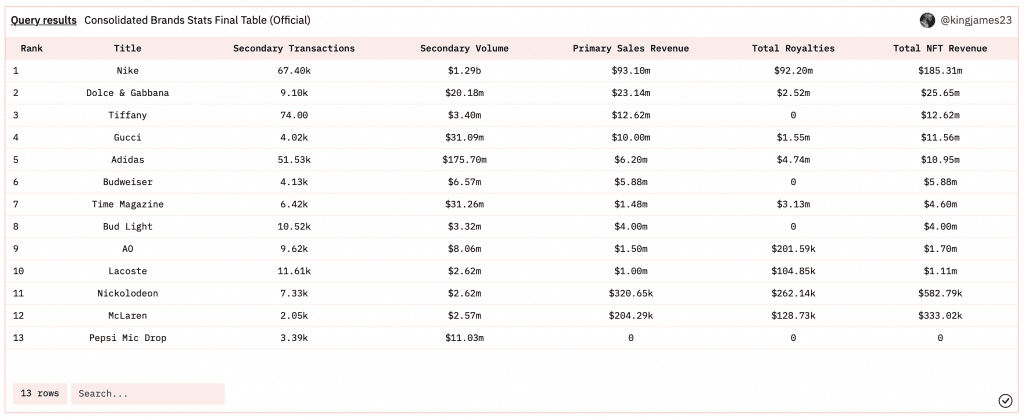
Taking second place on the overall list is Dolce & Gabbana, which made headlines – and set records – in October 2021 in connection with its release of Collezione Genesi, a nine-piece collection of fashion NFTs and physical garments that sold for the equivalent of almost $5.7 million. The Italian fashion brand has since expanded its NFT offerings, enabling it to generate $25.65 million in total NFT-related revenue, with $23.14 million of that coming by way of primary sales revenue and $2.52 million in royalties (on 9.11k transactions). And not to be overlooked, Tiffany & Co. landed in the number 3 spot, with $12.62 million in primary sales revenue. That figure is the result of the 250 NFTs that the LVMH-owned jewelry company offered up and sold to CryptoPunks NFT holders this month for 30 ETH each. According to the Dune data, Tiffany & Co. does not generate royalties for secondary sales; however, the secondary volume for the Tiffany & Co. NFTs is worth $3.4 million based on 74 secondary transactions.
The second highest-ranking luxury brand on the list is Gucci in the number 4 spot ($11.56 million in total NFT revenue), followed by adidas in the number 5 spot ($10.95 million), which generated the bulk of that revenue from its collaborative “Into the Metaverse” NFT project with Bored Ape Yacht Club, gmoney and PUNKS last year. Budweiser nabbed the number 6 spot ($5.88 million), Time Magazine at 7 ($4.60 million), Bud Light at 8 ($4 million), the Australian Open at 9 ($1.7 million), and Lacoste at 10 ($1.11 million). Nickelodeon, automaker McLaren, and Pepsi round out the list of 13 companies.
The revenue gains these companies are making in the web3 space are striking, as they are among some of the early examples of big-name brands wading into NFTs and successfully crafting communities in this realm – both via pricey NFT offerings and ones that are free to mint, as well as via separate metaverse efforts.
Community-building is no small part of the picture here, and in fact, may even be more critical for brands when it comes to their NFT projects than the immediate revenues – at this stage, at least. After all, $11.56 million in NFT-related revenue that Gucci has amassed to date pales in comparison to the $11.07 billion in total revenue that the Kering-owned giant generated in 2021, largely driven by its physical fashion and leather goods. The same goes for Nike, for example, with the $185.31 million that it has generated from sales of NFTs representing just 0.4 percent of the $44.5 billion in sales – of tangible goods and services – that it reported for the 2021 fiscal year, alone.
“I would argue that [revenue] is not the most important metric” for brands offering up NFTs, digital marketing and data strategist Samuel van Deth stated in connection with the newly released data. “The impact on overall brand awareness, engagement, loyalty, and customer lifetime revenue are probably the bigger reasons why brands are investing here.”
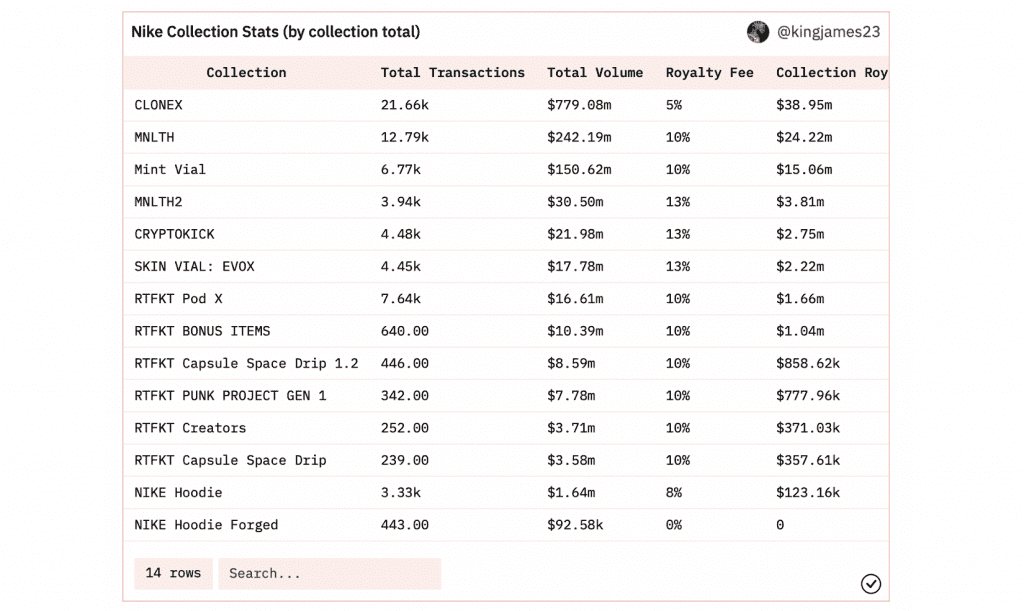
Both Nike and Gucci are good examples of how widely brands endeavors into the metaverse can be embraced; Nike’s CEO John revealed in March that “a total of 6.7 million players from 224 countries have visited NIKELAND,” the Swoosh’s experience that Nike launched with metaverse platform Roblox in mid-November 2021. (It is worth noting that Nike offers up its physical products in 170 countries.) Since then, the number of NIKELAND “visits” has surpassed 19.9 million, according to Roblox.
At the same time, Gucci similarly experienced notable success with its “Gucci Garden” in Roblox, with more than 20 million Roblox players reportedly visiting the pop-up during the two-week-long virtual event during the spring of 2021. (The virtual event also made headlines for proving the potential strength of the secondary market for virtual goods, as at least one of the virtual bee-embroidered Gucci Dionysus bags that the brand offered up in its virtual retail store on Roblox commanded a resale price of 350,000 Robux – or roughly $4,115, which is more than the $3,400 retail value of the physical version of the bag.)
In May, Gucci joined the likes of Nike and launched a more permanent experience on the platform called Gucci Town, which currently boasting upwards of 33.4 million “visits.”
Taken together, the demand for these (and other) companies’ NFTs and the rate at which consumers are interacting with their virtual worlds on platforms like Roblox seems to demonstrate the potential that these ventures can have for companies and their efforts to engage with consumers – especially of the Gen-Z and Gen Alpha demographics – in this burgeoning medium. The reach of the virtual world and corresponding branded experiences goes well beyond that of a physical one, of course, enabling companies to not only connect with more people but to operate without some of the limitations placed upon them by the “real” world – whether that be production capacity or a need to limit distribution (or carefully configure prices) in order to maintain their images of exclusivity.
With the level of interaction – and successful brand awareness-building activities – at play and the potential for rising revenues both now and down the line, it seems that NFTs and metaverse ventures more broadly will continue to serve as an attractive medium for companies across industries, including early-adopters like fashion and luxury, and beyond.




